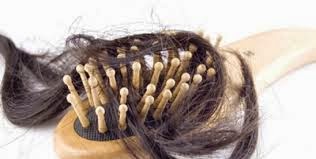Women enjoy thick and healthy hair throughout the nine months of childbearing. The raging hormones coupled with an external supply of vitamins account for their lustrous mane. However, soon after childbirth, the hair falls rapidly or thins out considerably.
Such unusual shedding during the postpartum is normal. There's no need to panic because you won't go bald. Your hair will grow back by your baby's first birthday. Till then, you can use a few cures for hair loss mentioned below.
What's the cause of hair loss?
The hair on our scalp grows in three stages - Anagen (growth phase), Catagen (transitional phase), and Telogen (resting phase). At any given time, 85%- 90% of the strands of hair are in the growing stages while the rest are in the resting phase. In the resting phase, hair fibers have completed growth and will soon be shed.
During pregnancy, the levels of estrogen increase drastically to prolong the growing phase. Hence, shedding is reduced to the minimum. Post-delivery, the number of estrogen dips. There is a transition - a large number of hair strands enter the resting phase and are shed. Such shedding will continue until the hormone levels are restored to their pre-pregnancy state.
In addition to hormonal imbalance, physical stress and exhaustion caused by the entire birthing process also trigger hair loss. It starts immediately after delivery and stops within 6 -12 months of childbirth. The strands come loose when combing or washing.
Cure for Hair Loss after Pregnancy
- Diet plays a major role. Throughout and after pregnancy, the body functions are divided between you and your baby. Your body does a double shift to meet your nutritional needs as well as those of your little one. Therefore, you shoulda healthy diet. It should include an adequate amount of fruits and vegetables. These food groups are rich sources of vitamins, minerals, and antioxidants. Antioxidants like Flavonoids protect the follicles and promote healthy hair growth. Include foods such as spinach, artichokes, blueberries, cranberries, peppers. Antioxidants also help get rid of toxins.
- Speak to your doctor about the use of vitamin supplements. Vitamin E, Vitamin C, Biotin, Folic Acid, and zinc are very crucial at this stage. Omega -3 fatty acids also promote a healthy scalp.
- Drink plenty of water to stay hydrated.
- Handle your hair with care. Avoid excessive brushing or the use of heat styling. Don't comb your tresses when wet. Use a wide-toothed comb.
- Use strengthening shampoos and products designed to reverse hair fall or those that add volume and texture. Herbal products are a better option. Hot oil treatments and scalp massages will help strengthen the hair follicles.
- It will help to change your hairstyle. A short or bob cut is recommended for new moms. Shorter cuts add volume. They are also easy to manage with a baby around the house.
- Avoid styles such as cornrows, tight braids, ponytails, and pigtails. They exert stress on the scalp and aggravate shedding.
- And, don't forget to de-stress and relax.
Article Source: http://EzineArticles.com/?expert=Mohd_Hairul_Hisham

.jpg)


.jpg)





.jpg)








